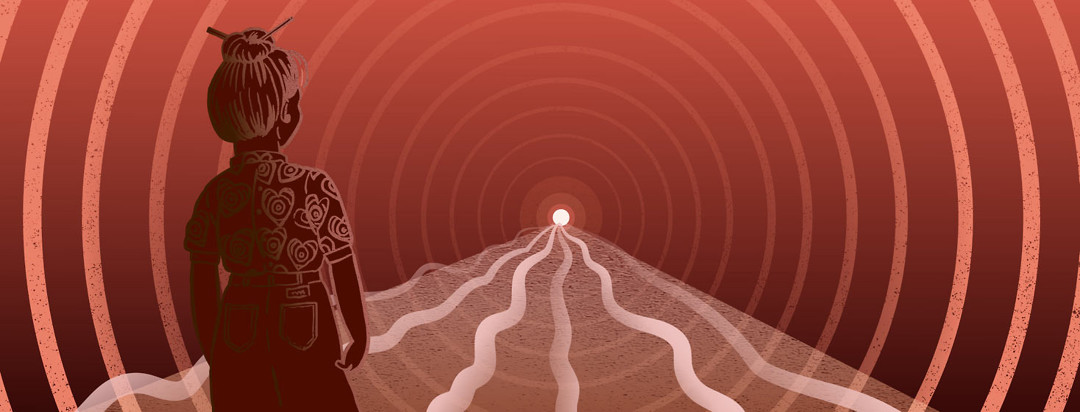What Is COPD?
Some people in this community also have COPD. It’s a disease that affects the lungs and may cause shortness of breath. So, what is COPD? Here’s what to know.
What is COPD?
COPD is an acronym for Chronic Obstructive Pulmonary Disease. We can break this acronym down to gain a basic idea of what it is.
- Chronic. This means that it is always there. It’s a permanent lung disease.
- Obstructive. Airways become obstructed or narrow. Air can get in through obstructed airways. But it has a hard time getting back out. A term for this is airflow limitation. This can make you feel short of breath. Most people with COPD have some degree of airflow limitation.
- Pulmonary. It affects the air passages inside your lungs.
- Disease. A change occurs to your airways causing two conditions known as chronic bronchitis and/or emphysema.
What is chronic bronchitis?
Airways become chronically inflamed. This inflammation causes mucus to build up in the airways which can irritate your cough reflex, causing a chronic cough. The combination of inflammation and mucus obstructs the flow of air through your airways.1-2
What is emphysema?
Once air moves through airways it enters air sacs which are small, balloon-like structures. They expand when you inhale and recoil when you exhale. Over time, COPD causes lung tissue to break down. This makes it so some alveoli do not recoil causing air to become trapped inside your lungs. There is then less room for air exchange to occur inside your lungs.3
It is often the case that one of these is the dominating disorder that a person with COPD may have though most experts now understand most people with COPD have a combination of both emphysema and chronic bronchitis.1
How is COPD diagnosed?
COPD may be diagnosed by one of these methods:1,4
- You have a family history of COPD.
- You have a long history of smoking cigarettes.
- You have a history of exposure to toxic chemicals or fumes at your work.
- You otherwise have a history of exposure to air pollution.
- You have a test called a Pulmonary Function Test. This is the best way of diagnosing COPD. It can show if you have chronic airflow limitation.
What are the symptoms of COPD?
COPD is considered a gradually progressive disease. The most common symptoms are shortness of breath, coughing, chest tightness, and increased sputum production. Early in the course of the disease, these symptoms may be brushed off as aging or being out of shape.1,4
Shortness of breath and coughing are symptoms it shares with heart failure. It also is associated with fatigue and a reduced tolerance for exercise.5
Because it is progressive, getting an early diagnosis is very important because progression can be slowed once proper treatment is started. Treatment can also help to minimize symptoms and allow you to live a quality life for a long time.1,4
Later in the course of the disease, some people with COPD may develop heart failure. This may be the result of years of your heart pumping blood through diseased lungs. This is one theory explaining why some people have both COPD and heart failure.1,4
Like heart failure, COPD may flare-up. A flare-up is when breathing suddenly gets worse. COPD flare-ups may be due to worsening airway inflammation which may be caused by environmental triggers, such as cigarette smoke, strong smells, or common allergens. People with COPD are at an increased risk of developing pneumonia so sometimes pneumonia is the cause of flare-ups. Heart failure is another potential cause of flare-ups. Treating flare-ups generally involves finding what the cause is and treating that.4
What is the treatment for COPD?
There is no cure for COPD but there are many treatments. These treatments can help slow the progression and minimize symptoms.1,4
Treatment usually involves lifestyle changes. This usually begins by quitting smoking or changing work environments. It may also include taking medicines every day. The most common medicines are inhaled by using inhalers and nebulizers. These devices allow you to inhale respiratory medicine which helps to keep airways open long-term.1,4
Like heart failure, some people with COPD may need to use home oxygen. Others may need machines such as BiPAP. While people with heart failure may benefit from cardiac rehabilitation, people living with COPD may benefit from pulmonary rehabilitation. This is beneficial because staying physically active is very helpful for people living with chronic diseases like heart failure and COPD.4
Our sister community
COPD is generally a preventable disease but once you have it, there is no cure. However, an early diagnosis and aggressive treatment can help slow the progression and improve the quality of your life. As with heart failure, modern treatment has gone a long way to helping people with COPD live better and longer than ever before.
Some links in this article are to articles at our sister community: COPD.net. Like heart-failure.net, COPD.net is a FREE community.

Join the conversation